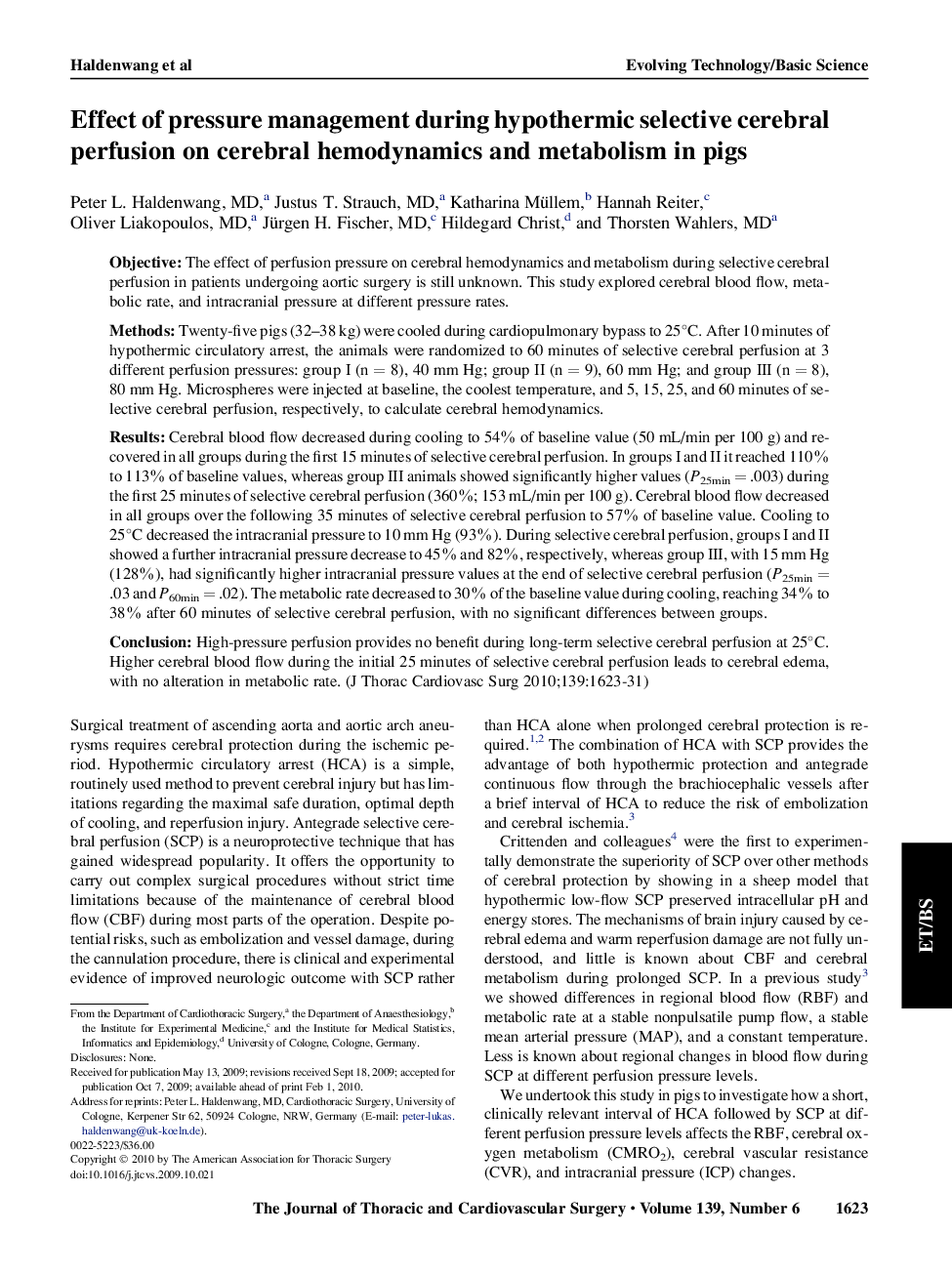| کد مقاله | کد نشریه | سال انتشار | مقاله انگلیسی | نسخه تمام متن |
|---|---|---|---|---|
| 2984109 | 1578661 | 2010 | 9 صفحه PDF | دانلود رایگان |

ObjectiveThe effect of perfusion pressure on cerebral hemodynamics and metabolism during selective cerebral perfusion in patients undergoing aortic surgery is still unknown. This study explored cerebral blood flow, metabolic rate, and intracranial pressure at different pressure rates.MethodsTwenty-five pigs (32–38 kg) were cooled during cardiopulmonary bypass to 25°C. After 10 minutes of hypothermic circulatory arrest, the animals were randomized to 60 minutes of selective cerebral perfusion at 3 different perfusion pressures: group I (n = 8), 40 mm Hg; group II (n = 9), 60 mm Hg; and group III (n = 8), 80 mm Hg. Microspheres were injected at baseline, the coolest temperature, and 5, 15, 25, and 60 minutes of selective cerebral perfusion, respectively, to calculate cerebral hemodynamics.ResultsCerebral blood flow decreased during cooling to 54% of baseline value (50 mL/min per 100 g) and recovered in all groups during the first 15 minutes of selective cerebral perfusion. In groups I and II it reached 110% to 113% of baseline values, whereas group III animals showed significantly higher values (P25min = .003) during the first 25 minutes of selective cerebral perfusion (360%; 153 mL/min per 100 g). Cerebral blood flow decreased in all groups over the following 35 minutes of selective cerebral perfusion to 57% of baseline value. Cooling to 25°C decreased the intracranial pressure to 10 mm Hg (93%). During selective cerebral perfusion, groups I and II showed a further intracranial pressure decrease to 45% and 82%, respectively, whereas group III, with 15 mm Hg (128%), had significantly higher intracranial pressure values at the end of selective cerebral perfusion (P25min = .03 and P60min = .02). The metabolic rate decreased to 30% of the baseline value during cooling, reaching 34% to 38% after 60 minutes of selective cerebral perfusion, with no significant differences between groups.ConclusionHigh-pressure perfusion provides no benefit during long-term selective cerebral perfusion at 25°C. Higher cerebral blood flow during the initial 25 minutes of selective cerebral perfusion leads to cerebral edema, with no alteration in metabolic rate.
Journal: The Journal of Thoracic and Cardiovascular Surgery - Volume 139, Issue 6, June 2010, Pages 1623–1631